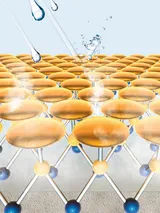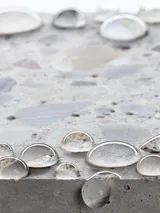Hybrid Materials



The combination of opposites which obviously do not belong together has always attracted mankind’s interest. One of the best known examples is the mythical figure of the mermaid, having a human head and torso and the tail of a fish. This principle is transferred to materials science by combination of inorganic and organic building blocks. Materials of this kind, such as silicone sealing materials or modern bake ware, are prevalent in our daily live.
Silicones are polymeric hybrid materials, which have an inorganic framework composed of chains with alternating silicon and oxygen atoms. Due to their molecular structure they are also referred to as siloxanes. Materials based on polysiloxanes are well known for their promising properties like chemical inertness, hydrophobicity, thermal stability and elasticity.
In the Institute of silicon chemistry, one focus of research is on the development of novel hybrid materials based on siloxanes. Different siloxanes, ranging from linear to brached, hyperbranched and dendritic structures, are examined. Another approach is the functionalization of nano-crystals with different kinds of polymers leading to applications in the field of photovoltaics, sensors and semiconductors.